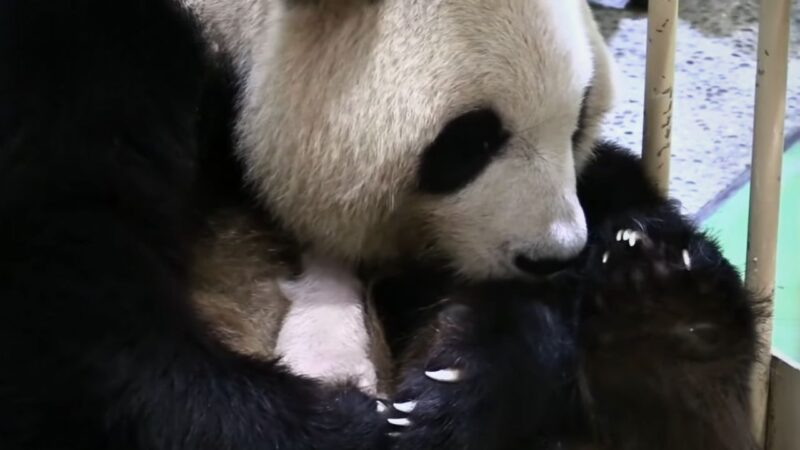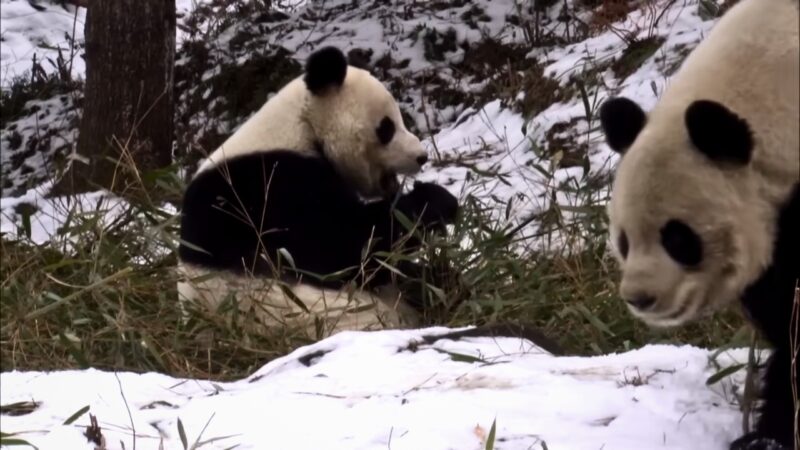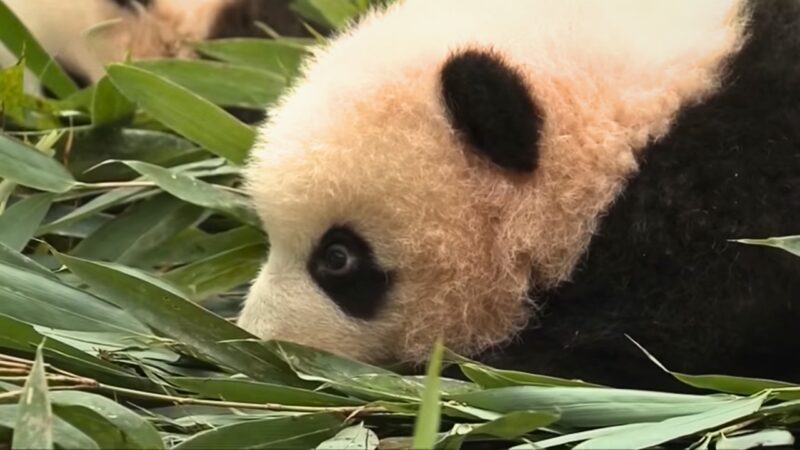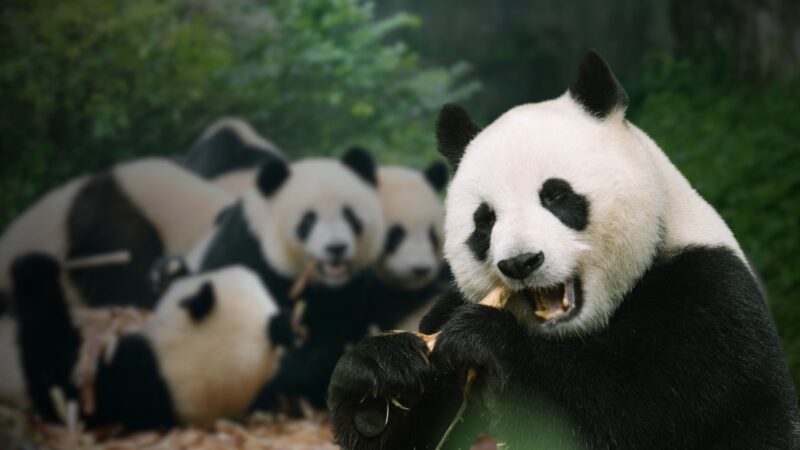Pandas: the chubby-cheeked, bamboo-munching darlings of the internet and real life alike. With their cuddly appearance and seemingly playful demeanor, they’ve captured the hearts of millions around the globe.
But how much do we really know about them? Have you ever wondered what a group of pandas is called? Stick around as we will talk about the fascinating realm of these animals’ social dynamics, terminology, and so much more.
The Fundamentals

Why Terminology Matters
When it comes to talking about animals, the words we use to describe them matter. They can shape our perceptions, frame our discussions, and even influence conservation efforts.
This isn’t just about semantics; it’s about understanding the deeper nuances of an animal’s behavior and social structure. Therefore, knowing the appropriate term for a group of pandas goes beyond mere curiosity—it aids in understanding the animal better.
Common Terms
You’re probably familiar with some group animal names: a flock of birds, a school of fish, a pride of lions. But what about pandas? A group of pandas is often referred to as an “embarrassment.” That’s right—an embarrassment! While it may sound somewhat comical, there is a layer of meaning to this term, which we’ll explore later in this article.
- Solitary: Refers to an animal that predominantly lives alone.
- Embarrassment: A term sometimes used to describe a group of pandas.
- Cub: A youngling.
A Group of Pandas: Breaking the Myth
Are They Really Solitary?
The predominant notion about these animals is that they are solitary creatures, preferring the tranquility of solitary life over the hustle and bustle of social interactions. And for the most part, this is true.
Adults are generally independent, with both males and females having their own home ranges. However, research has shown that their social lives may be a bit more complicated than we originally thought.
The Mysterious Embarrassment
While the term “embarrassment” may make it sound like pandas are bumbling, socially awkward creatures, the term is more of a misnomer. Groups can occasionally be found together, especially during mating season or in regions with abundant food resources.
Although it’s uncommon to see large congregations, when they do happen, they defy the assumption that pandas are strictly solitary animals.
Social Structure

Adults
Among adult pandas, interactions can be infrequent, but they’re not totally antisocial creatures. They communicate through vocalizations and physical cues, often leaving scent markings to signal their presence or territorial boundaries. They may have overlapping territories and might even share some resources, but close, sustained interaction is rare.
Juveniles
Young pandas exhibit a completely different social behavior. As cubs, they engage in playful activities and seem to enjoy communal life more. However, this changes as they grow older and reach sexual maturity. For juveniles, the learning curve involves understanding the norms of adult panda society, which includes becoming adept at solitary life.
Mother-Offspring Relationship
Perhaps the strongest social bond in panda society is between a mother and her cub. Mothers are attentive caregivers, often nursing and nurturing their young for up to 18 months. This mother-cub relationship provides the foundation for the cub’s future life, teaching it essential survival and social skills.
Global Influence
Diplomacy
Beyond their natural habitats, pandas serve as a symbol of international diplomacy. Known as “panda diplomacy,” the practice involves loaning pandas to other countries as a goodwill gesture. Not only do these furry ambassadors promote cultural exchange, but they also garner attention and resources for conservation initiatives.
Conservation Initiatives
Pandas are endangered, with only about 1,800 left in the wild as of my last update in September 2021. Various organizations worldwide are working diligently to preserve their habitats and protect them from poaching and other threats. The spotlight on these animals can sometimes overshadow other species, but their charismatic appeal also generates broader support for biodiversity conservation.
The Culture and History
The Symbolism in Chinese Culture
Pandas have long been a part of Chinese culture, history, and folklore. Considered a symbol of peace and prosperity, these creatures hold a special place in the collective heart of the nation. This animal is often seen as a diplomatic emblem and has been featured on various stamps, coins, and souvenirs to signify its cultural importance.
Ancient Myths and Folklore
In ancient China, pandas were believed to possess mystical powers. There are folk tales that speak of them as deities of the forest, guardians of sacred lands. Some stories even ascribe them to the ability to ward off evil spirits. These tales are a testament to how deeply entrenched they are in the history and cultural psyche of the region.
Pandas and Modern Media
From animated movies like “Kung Fu Panda” to countless memes and GIFs, these creatures have infiltrated modern media in a big way. Their global appeal isn’t just about their looks or their playful antics; it’s also about their perceived personalities — a blend of the wise, the whimsical, and the serene. They have become a cultural phenomenon transcending borders, and they continue to fascinate people of all ages.
The Evolutionary Journey
Did you know that pandas have been around for two to three million years? Genetic studies reveal that they are a unique lineage within the bear family. Unlike most bears that are omnivores, they evolved to be primarily herbivores, with their diet consisting overwhelmingly of bamboo. Understanding their evolutionary background can provide valuable insights into their current behavioral traits and ecological needs.
The Physiology
To support their bamboo-centric lifestyle, pandas have developed some unique physiological traits. For instance, their gut has a specialized microbial community to help digest cellulose, the primary component of bamboo. They also possess a “pseudo-thumb,” a modified wrist bone, to better grasp bamboo stalks. These features show how well-adapted pandas are to their specific ecological niche.
The Genetics of Conservation
Recent breakthroughs in panda genetics have significant implications for their conservation. By analyzing the genetic diversity within existing panda populations, scientists can identify the most effective ways to manage and protect these animals. Genetic research also helps in understanding the species’ historical population sizes and fluctuations, providing context for current conservation strategies.
The Challenges and Future of Panda Conservation

Habitat Loss and Fragmentation
One of the gravest threats facing pandas is the loss and fragmentation of their natural habitats. Urbanization, agriculture, and infrastructure development have significantly reduced the areas where they can live freely. As their habitats become more isolated, the likelihood of inbreeding increases, posing yet another threat to their survival.
Human-Panda Conflicts
As human settlements expand into panda habitats, conflicts are inevitable. Incidents of pandas wandering into villages or farmlands are becoming more common. These situations can be dangerous for both animals and humans. Effective management strategies need to be devised to minimize conflicts and ensure the peaceful coexistence of both species.
Future Prospects
Despite the challenges, there is hope for the future of pandas. Numerous conservation initiatives, both in China and internationally, aim to protect these fascinating creatures. Strategies like habitat restoration, community engagement, and stringent anti-poaching laws are making a difference. With sustained effort and global collaboration, we can hope to ensure that pandas thrive for generations to come.
Intriguing Trivia About Pandas
Lesser-Known Facts
- They eat 26 to 84 pounds of bamboo per day.
- They can climb trees and swim.
- They have a “sixth finger,” an extra bone for grasping bamboo.
Why Pandas Are Black and White
Their distinctive coloration is not merely for cuteness; it serves functional purposes. The black-and-white pattern provides camouflage in their snowy and rocky surroundings. Additionally, their dark eye patches may help them recognize each other and express emotions.
FAQs

Why is a group of pandas called an “embarrassment”?
The term “embarrassment” likely comes from their hilariously clumsy movements and lifestyles. There is very little scientific backing for this name, and it may have been popularized online.
Are there alternative names for a group of pandas?
Yes, aside from “embarrassment,” a group can also be called a “cupboard” or a “bamboo.”
What is the origin of these names?
The names likely stem from the pandas’ unique characteristics and behaviors. For example, the term “bamboo” is related to the pandas’ diet, as they consume a large amount of bamboo daily.
How much bamboo do pandas consume daily?
They consume between 26 to 84 pounds of bamboo daily to gain enough nutritional value.
How many pandas are left in the wild?
There are fewer than 2,000 left in the wild, according to the World Wildlife Fund (WWF).
Where do pandas live?
They are primarily found in Chinese regions like Chengdu. These creatures are known for their “lazy” and “clumsy” lifestyle.
What is the size of a baby panda at birth?
Babies are born the size of a stick of butter and grow to become two to three hundred pounds.
Are pandas good climbers?
Despite their size, they are proficient tree climbers.
Final Words

While it may be tempting to think of pandas as mere social media stars or the epitome of cuteness, their lives are much more complex. The term “embarrassment” may be charming, but it does a disservice to the intricate social dynamics and roles these magnificent creatures play in ecosystems and global politics.
The more we learn about them, the more fascinating they become. Understanding the nomenclature and social structure not only adds depth to our collective knowledge but also contributes significantly to their conservation. As we continue to be captivated by their enigmatic allure, let’s also endeavor to appreciate and protect the rich tapestry that is panda society.








